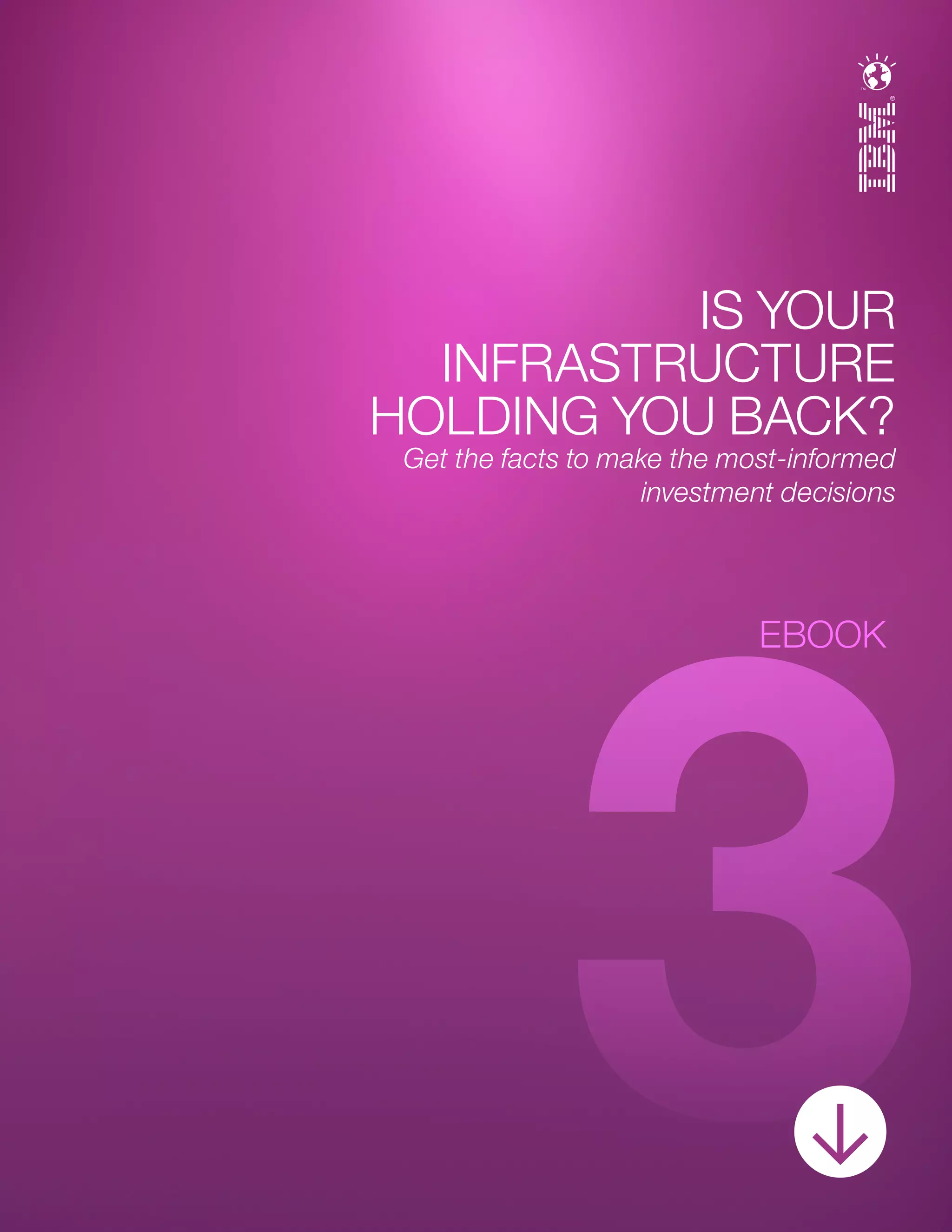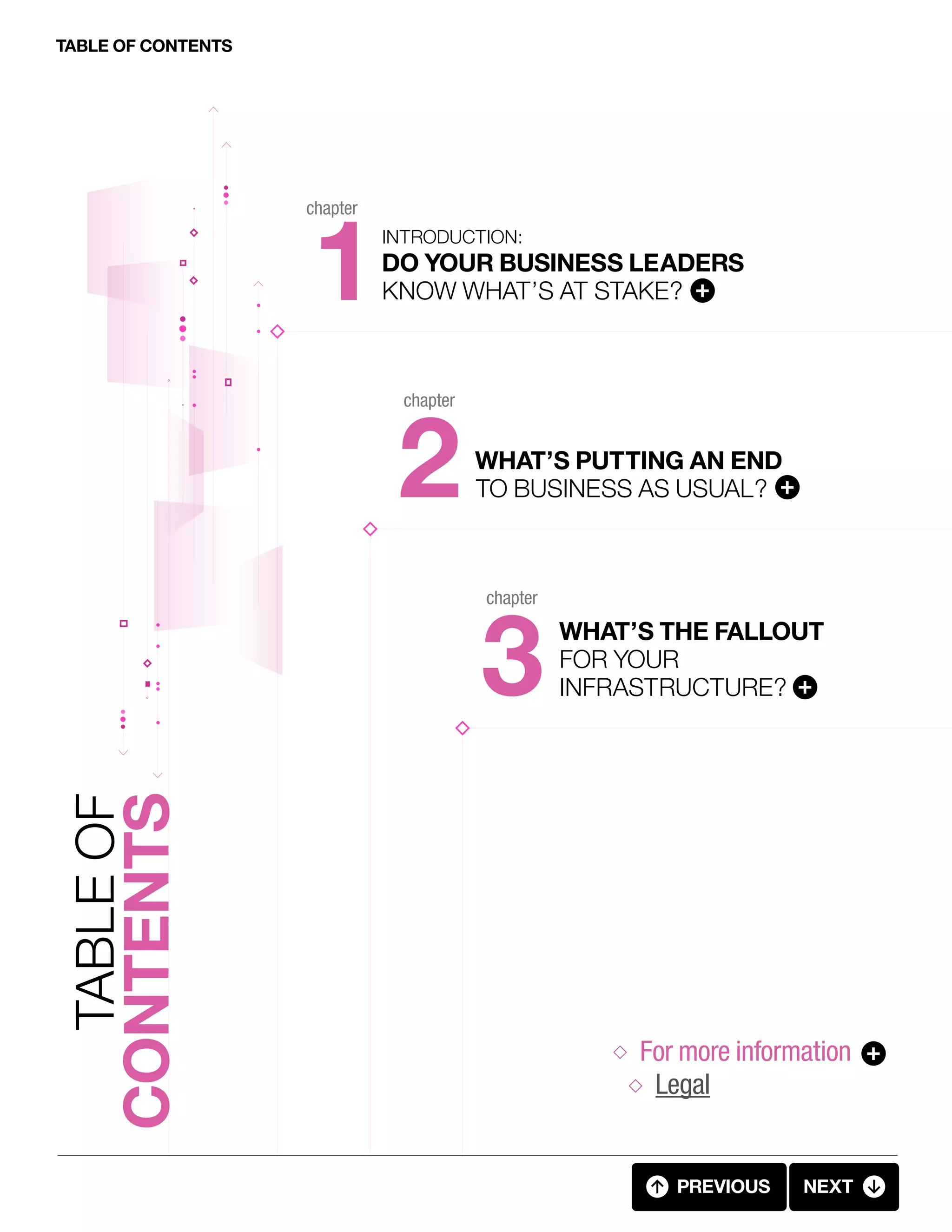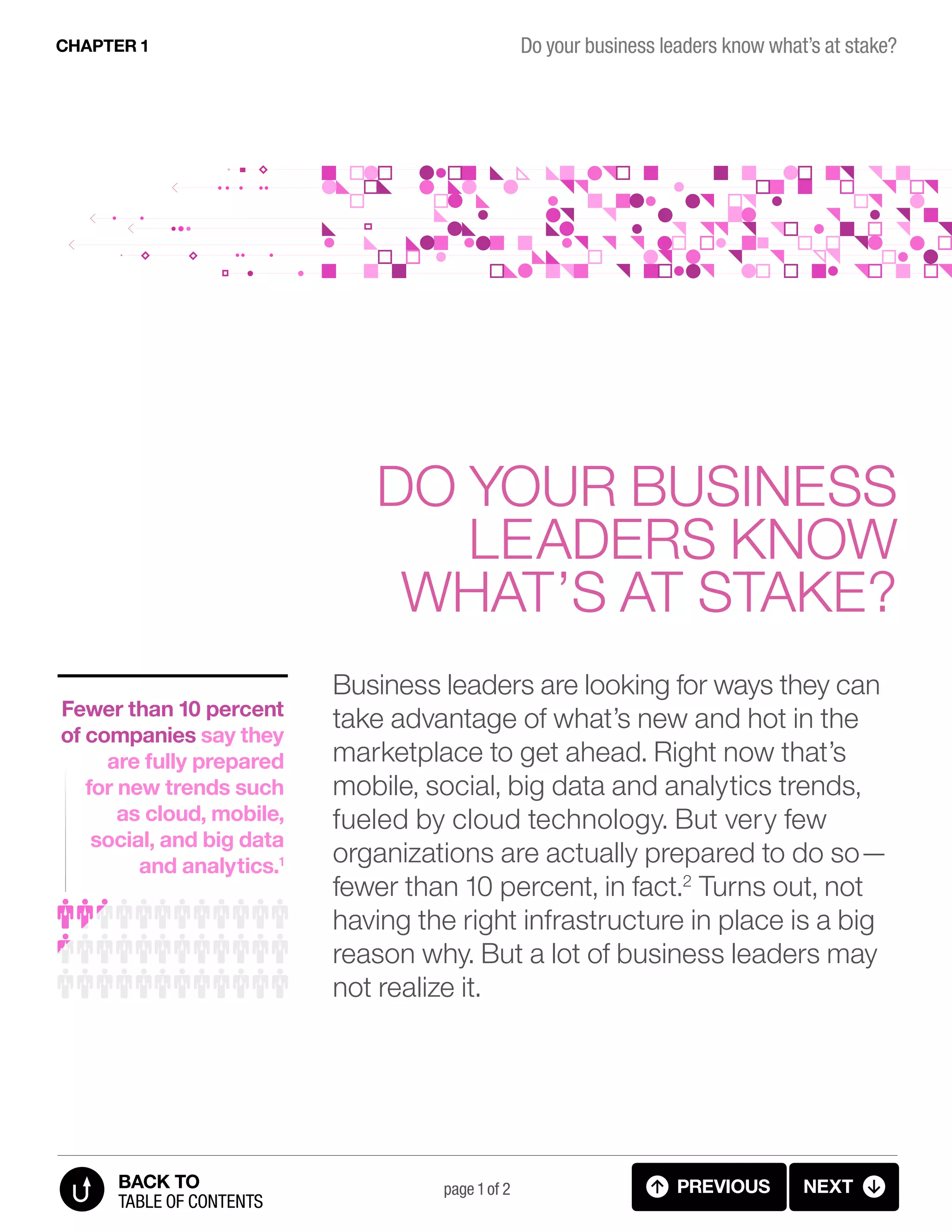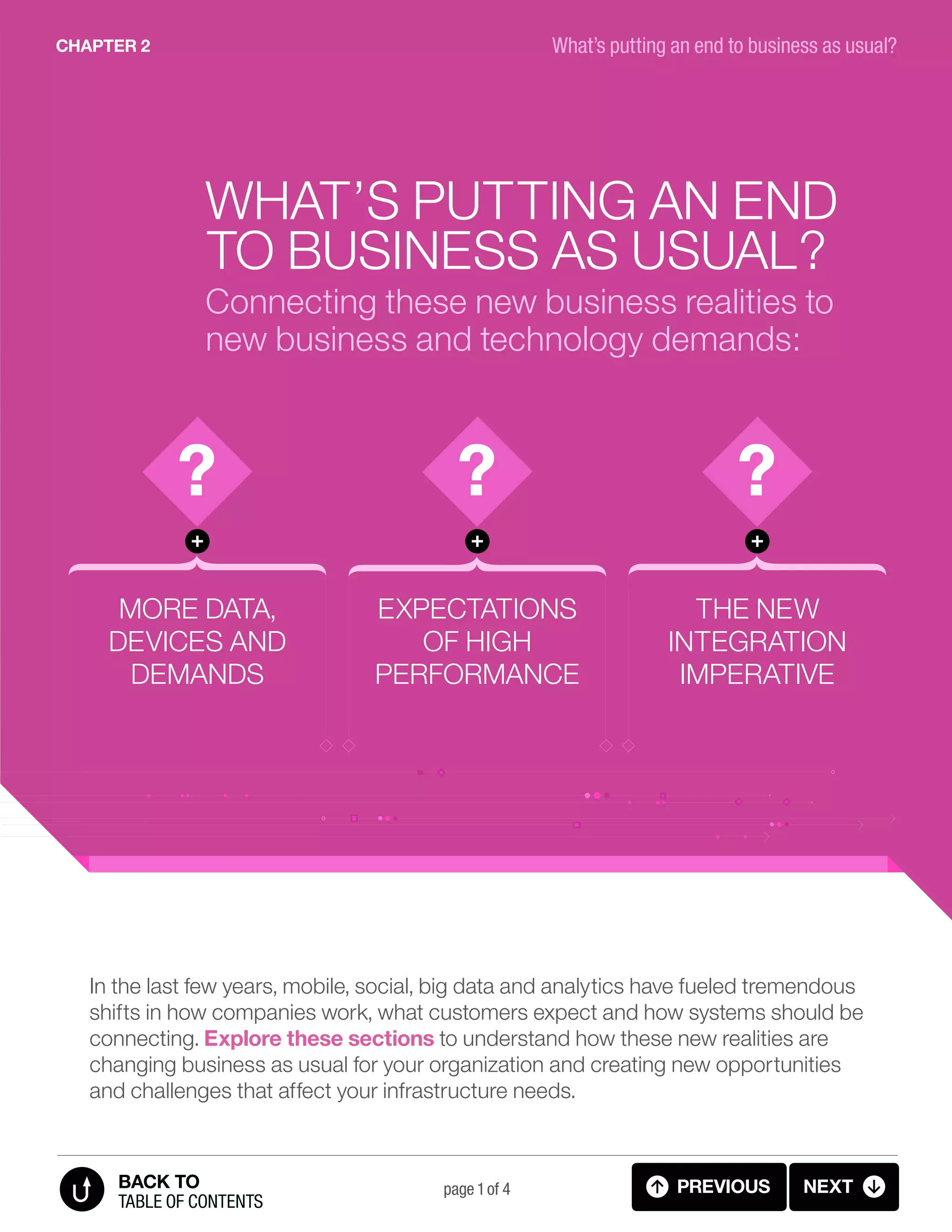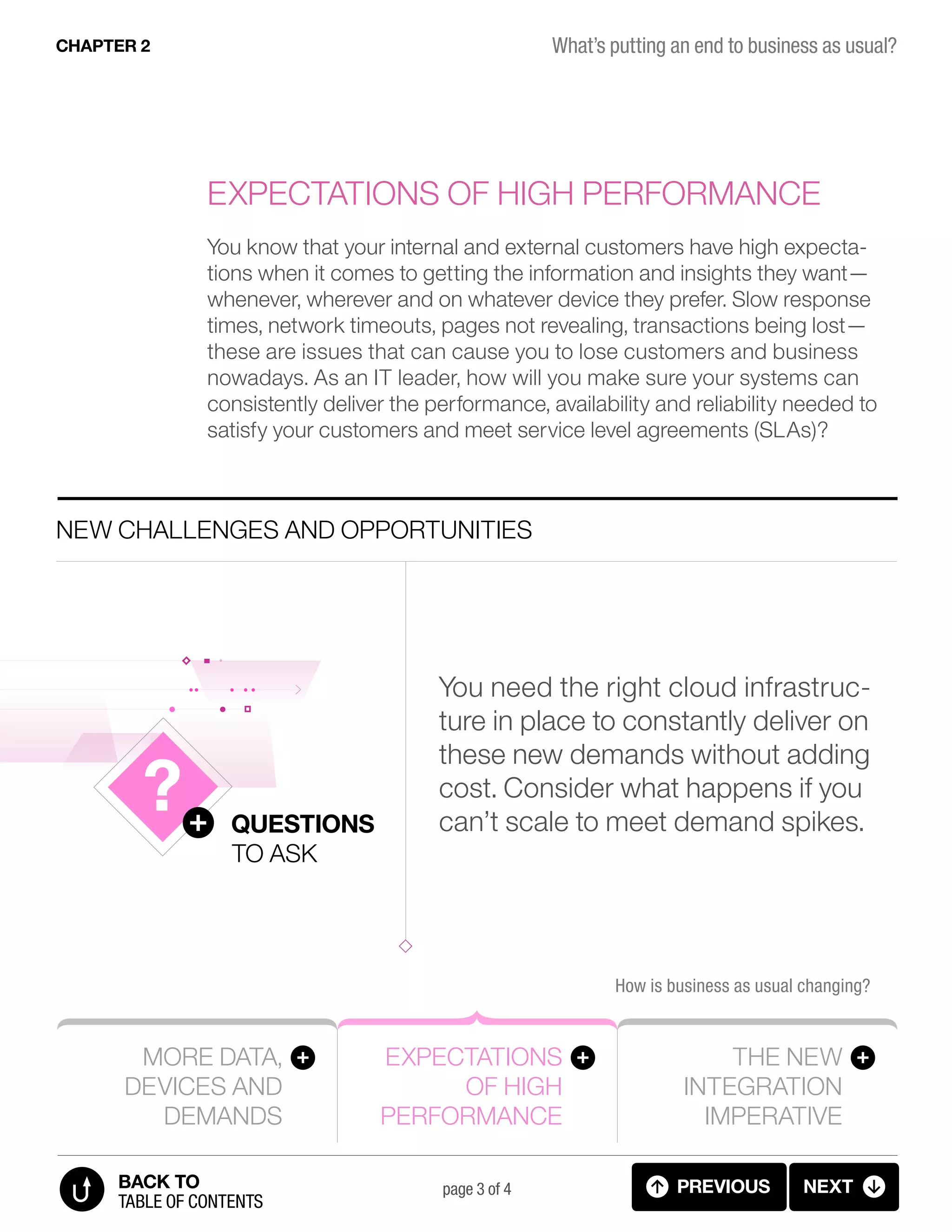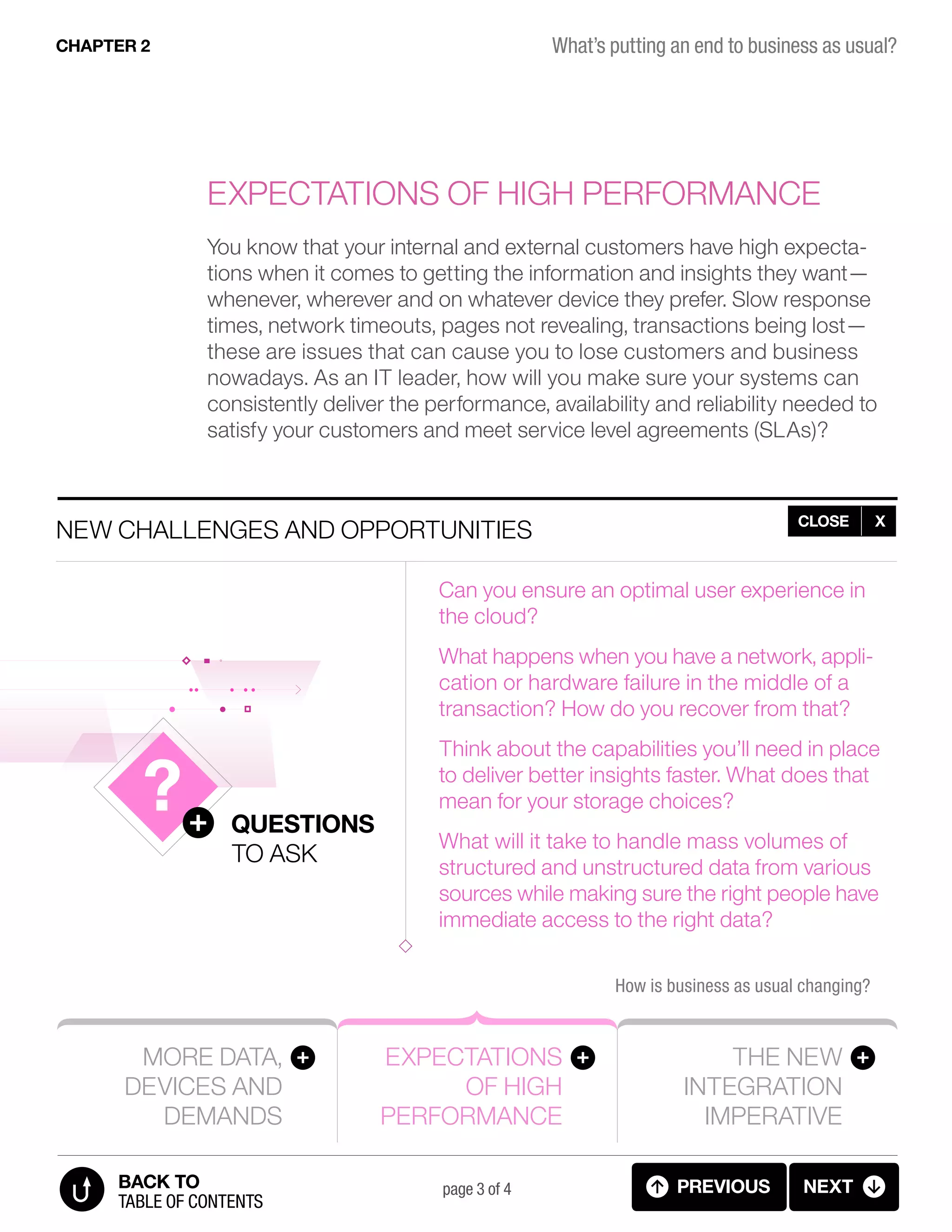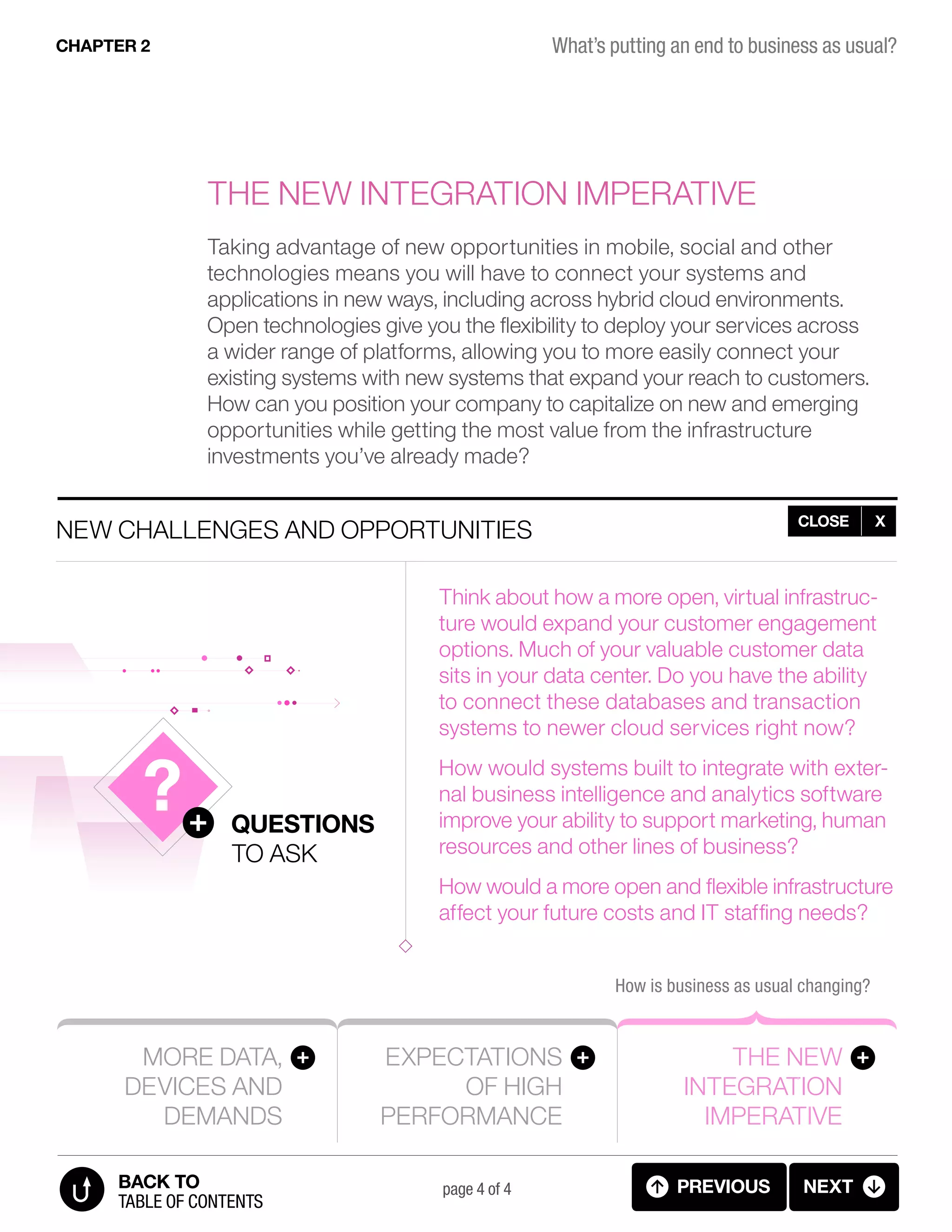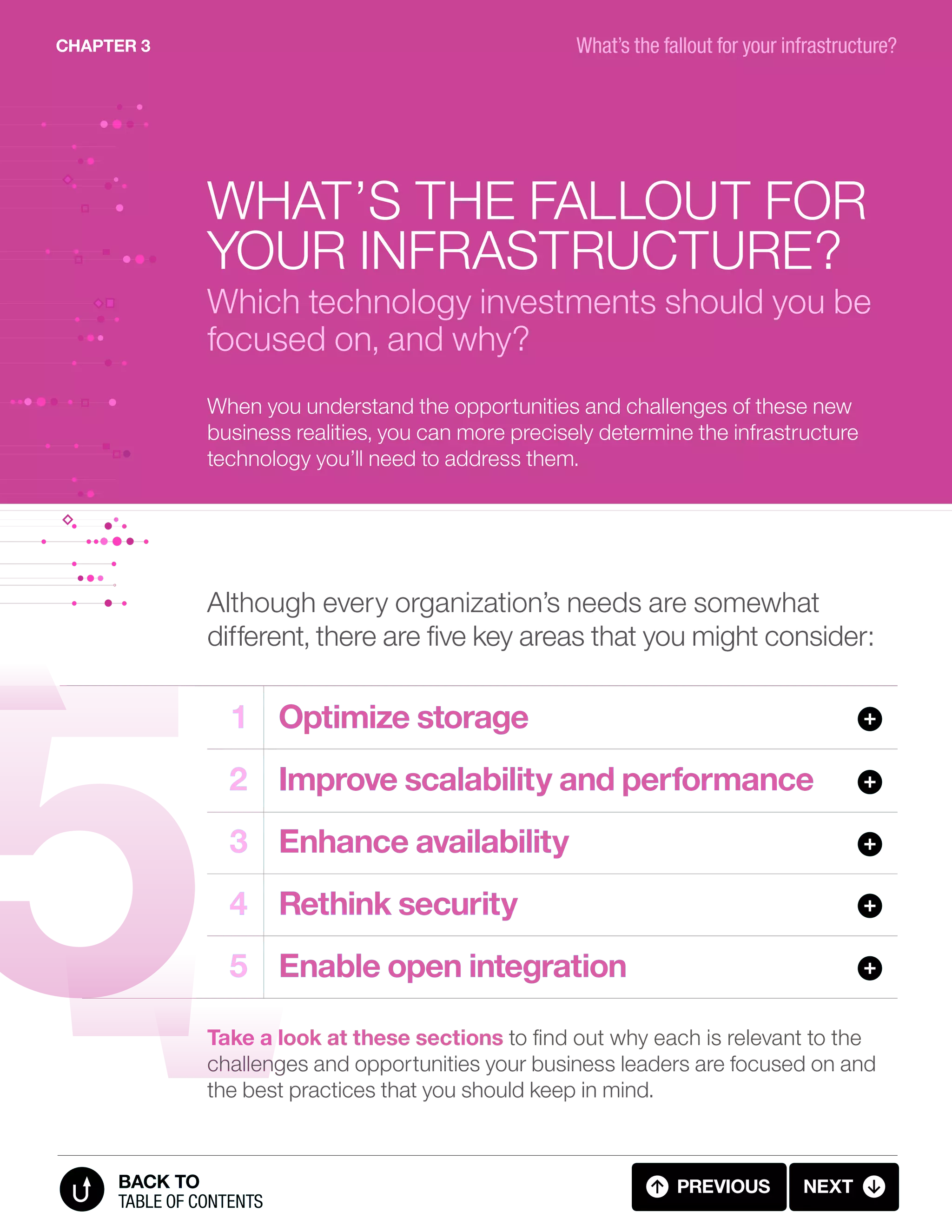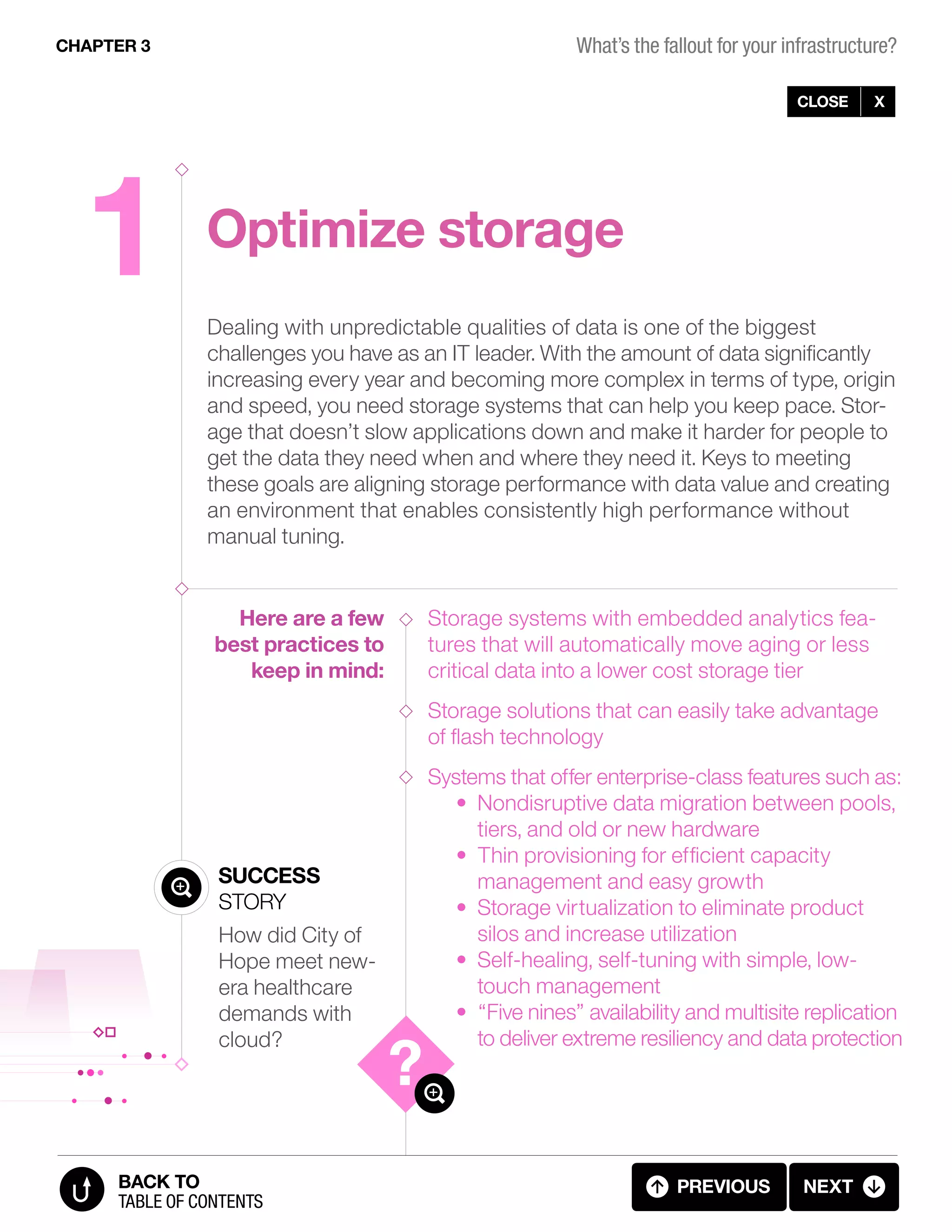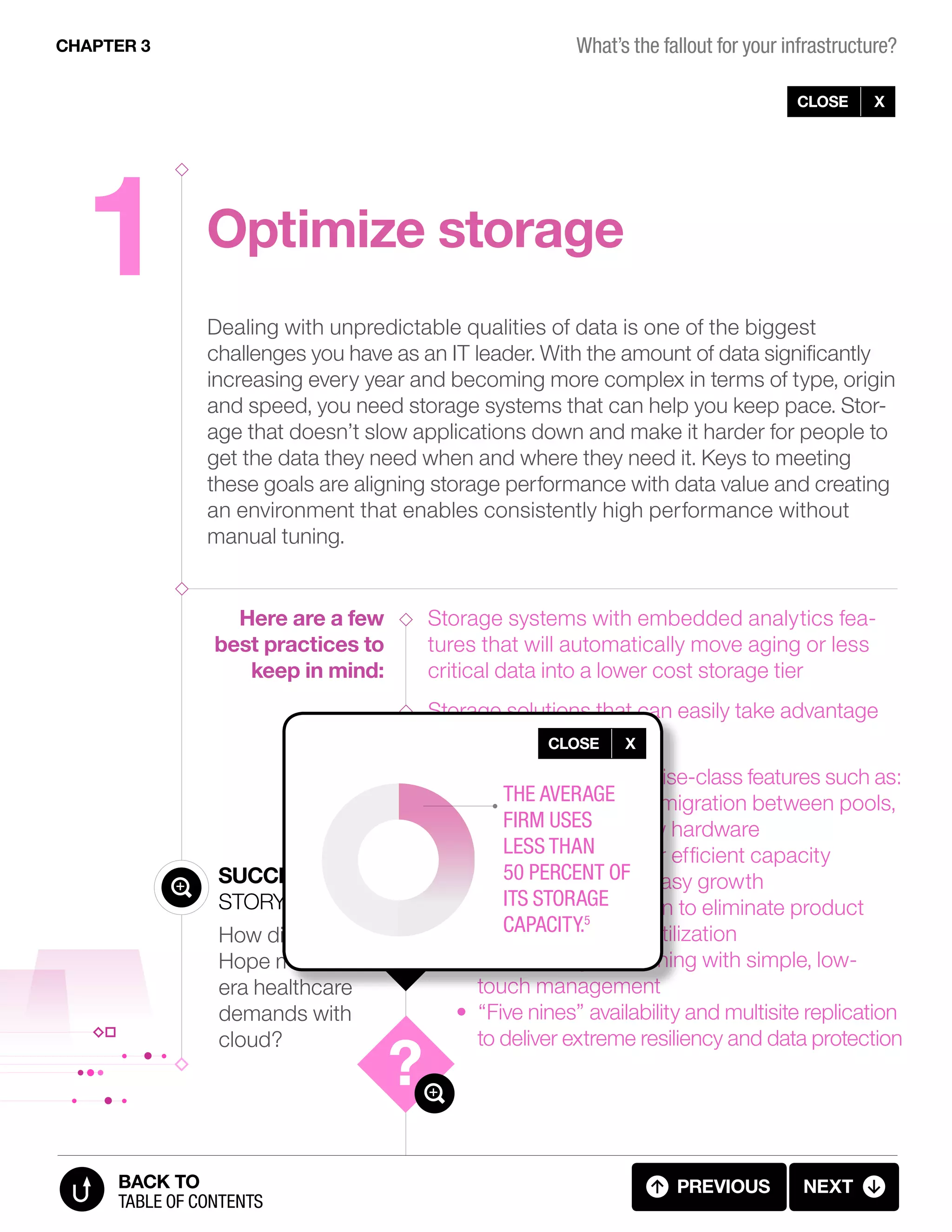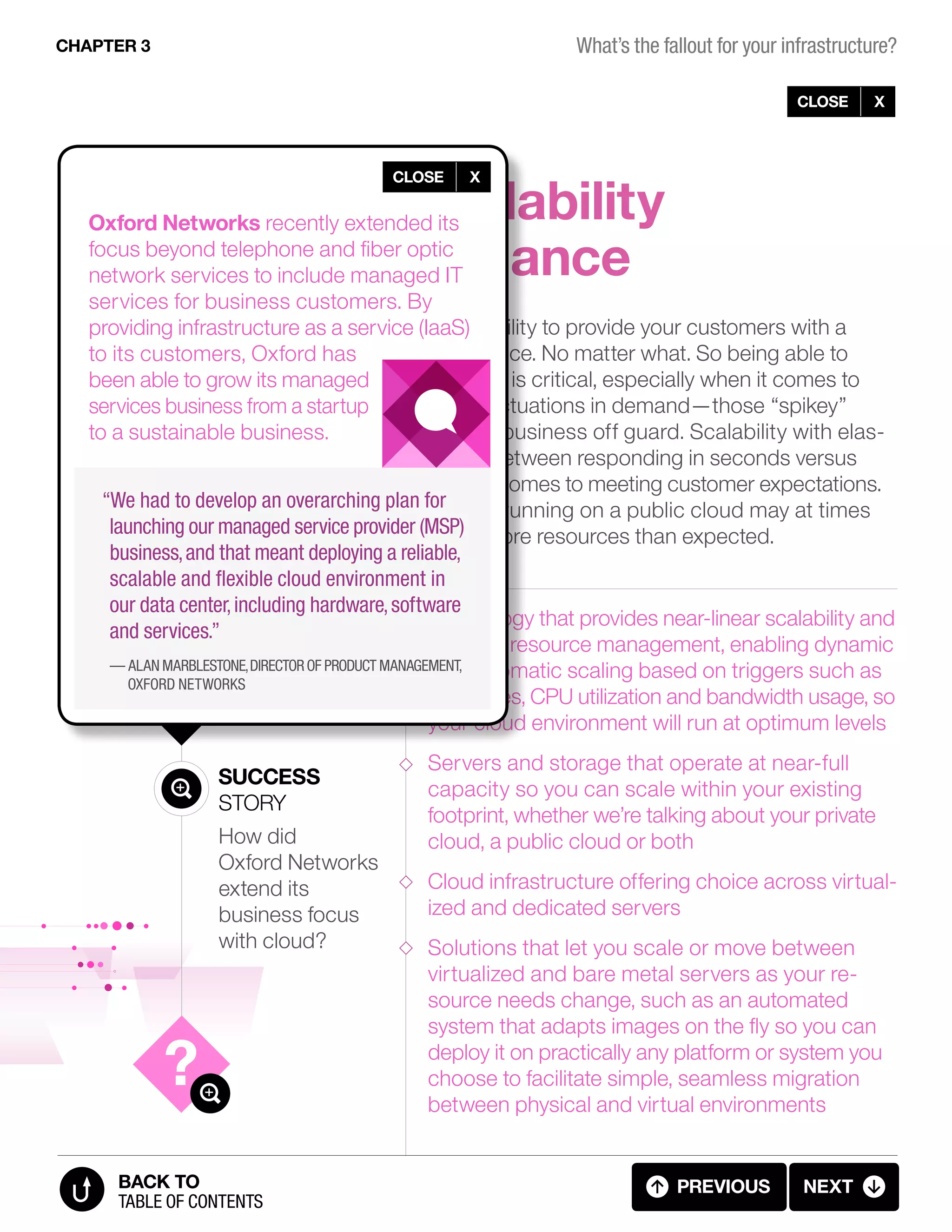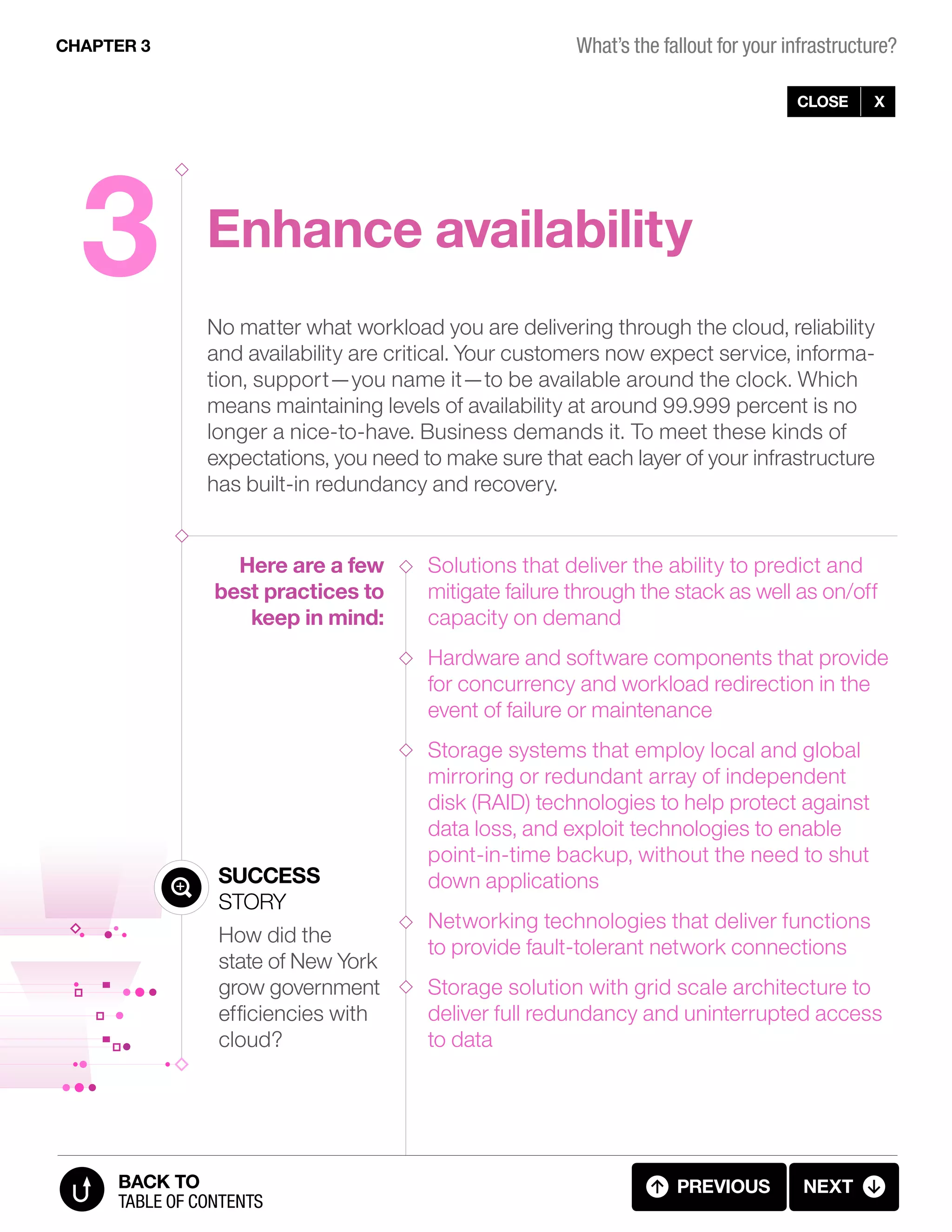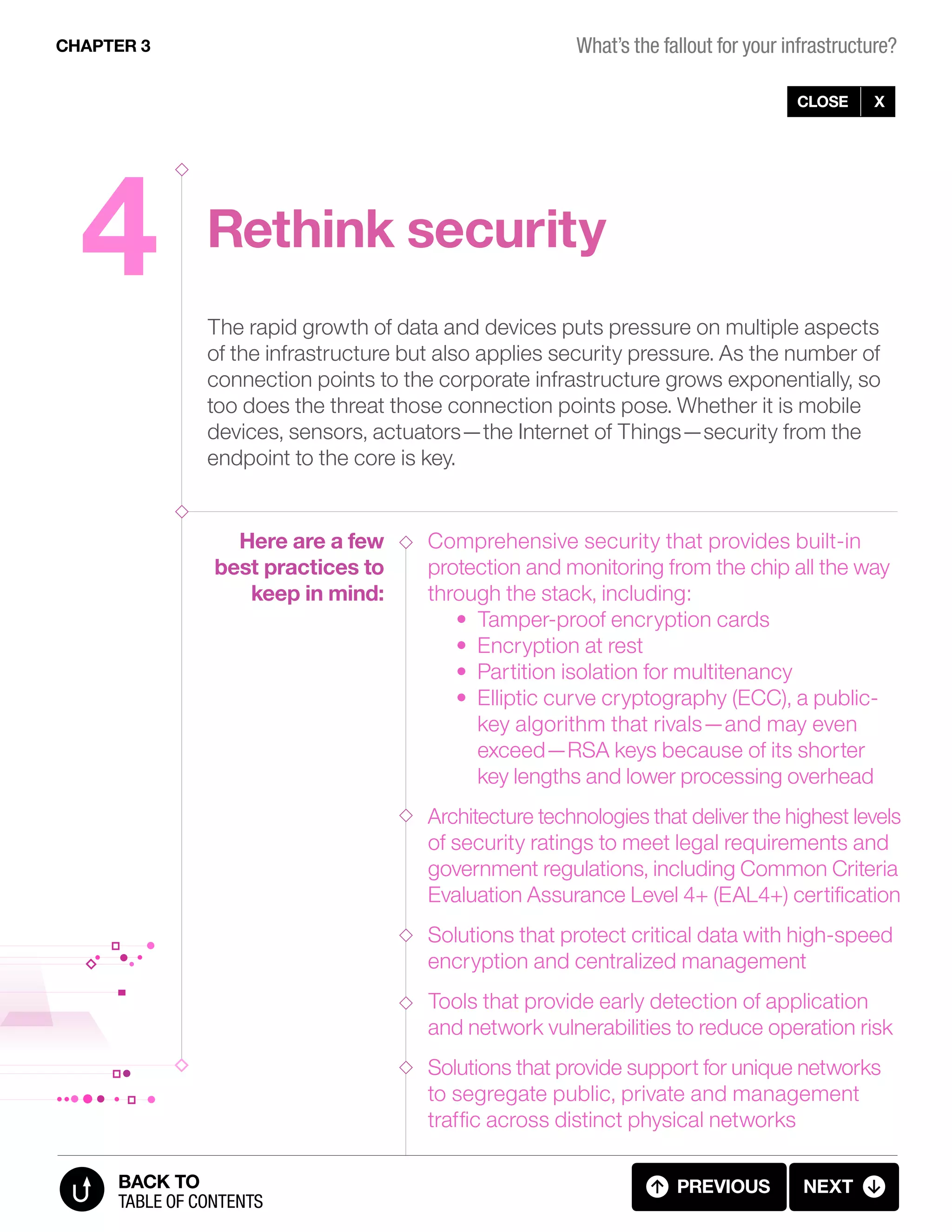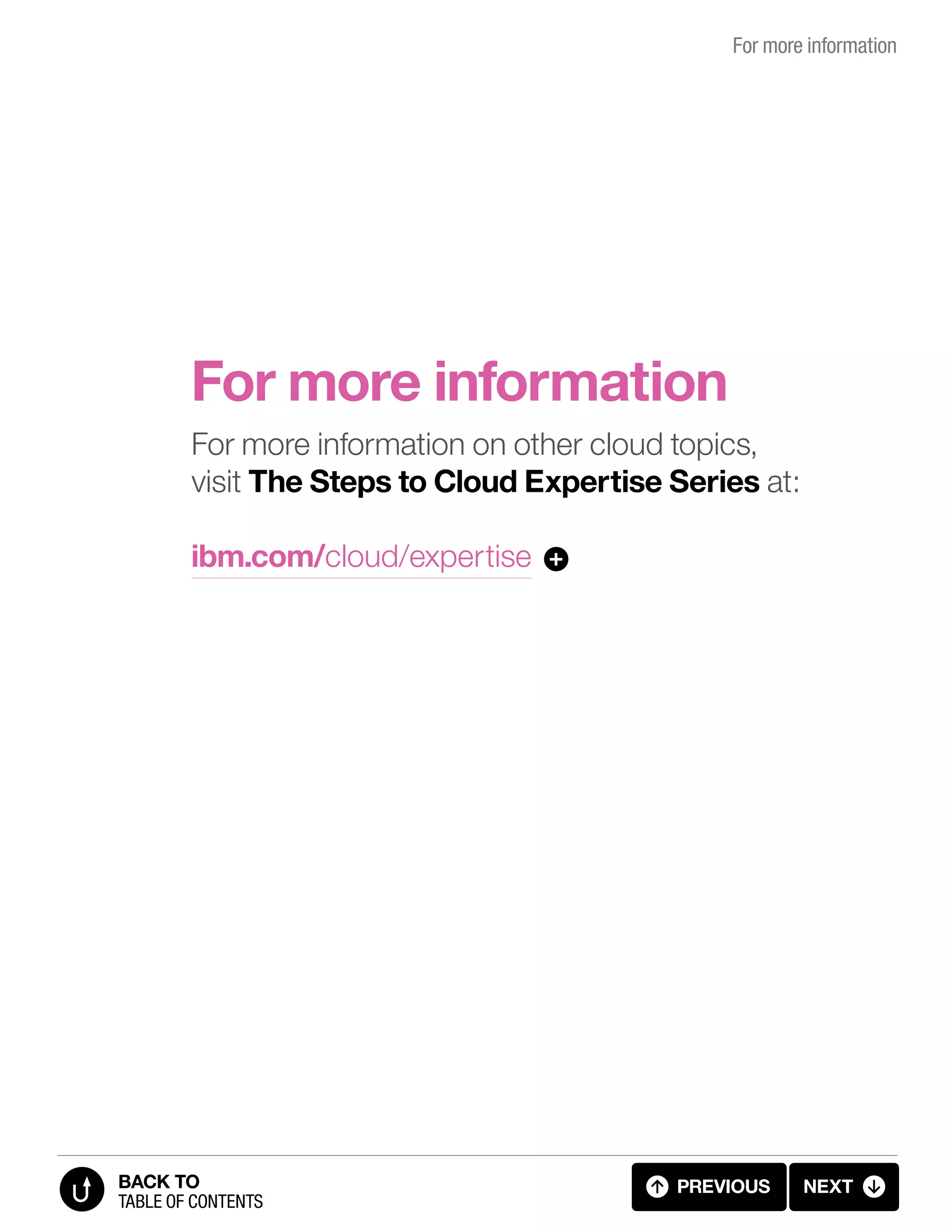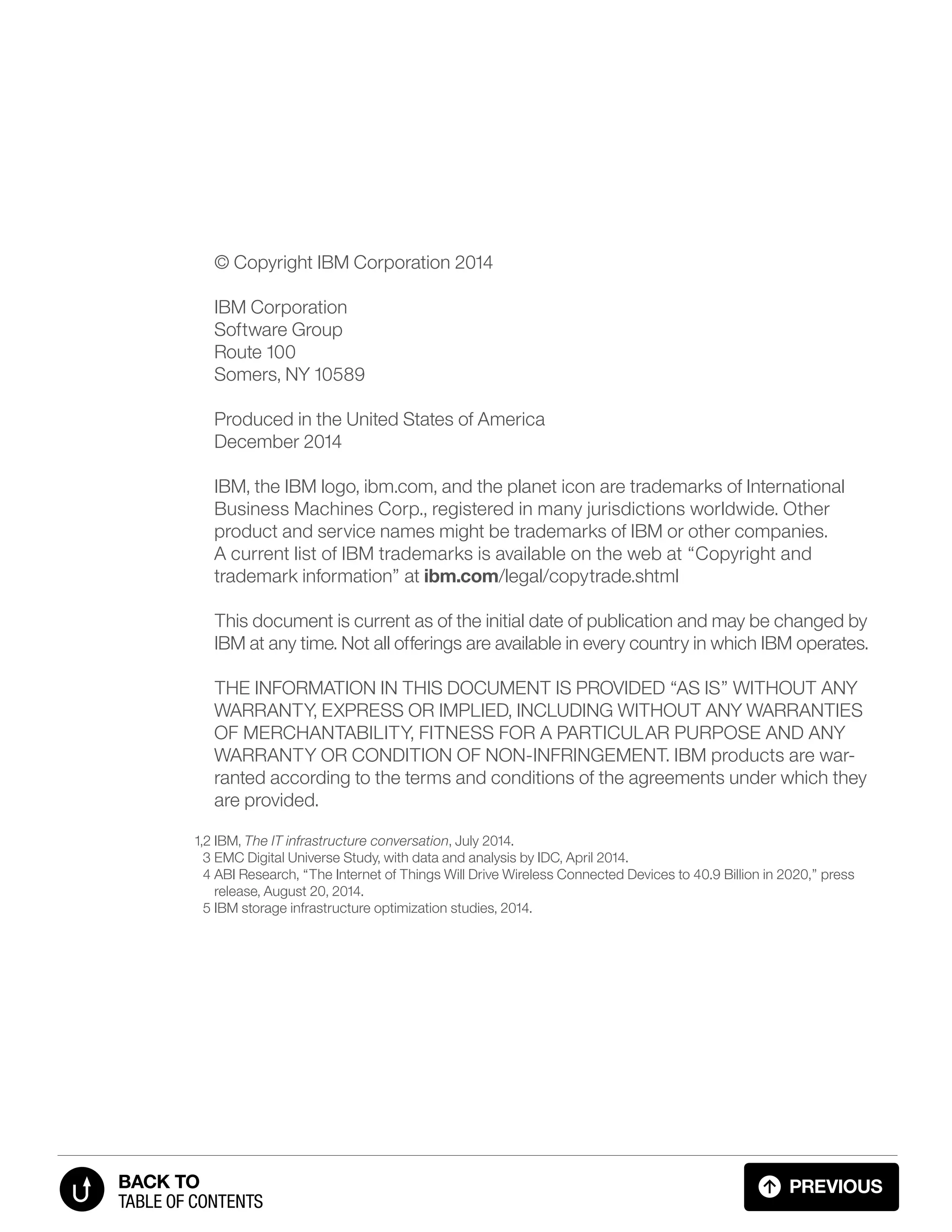This ebook outlines the critical importance of infrastructure investments for businesses seeking to leverage new market trends like mobile, social, and big data, with less than 10% of organizations feeling fully prepared. It emphasizes the need for scalable, high-performance cloud solutions that can handle increasing data volumes and user expectations while integrating with existing systems. The document explores key areas for technology investment, including storage optimization, enhanced scalability, availability, security, and open integration to capitalize on emerging opportunities.
